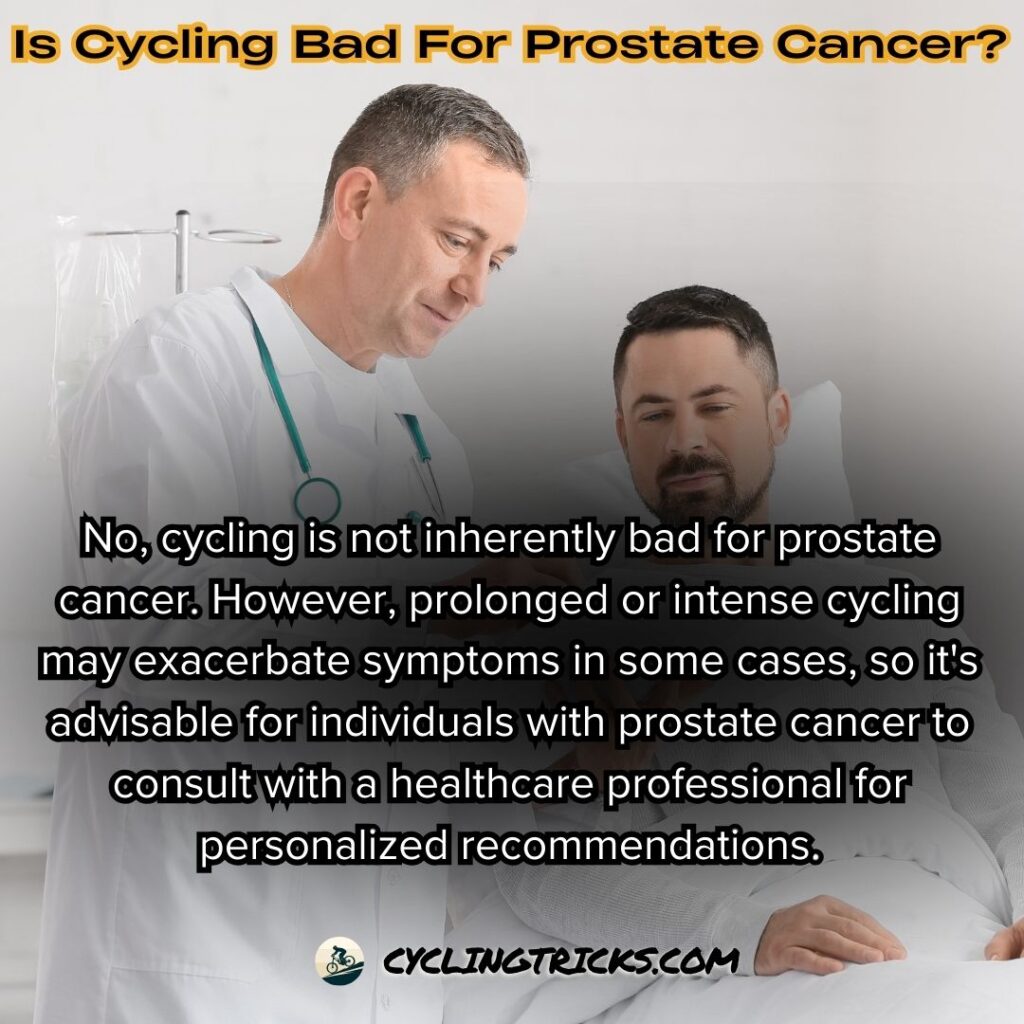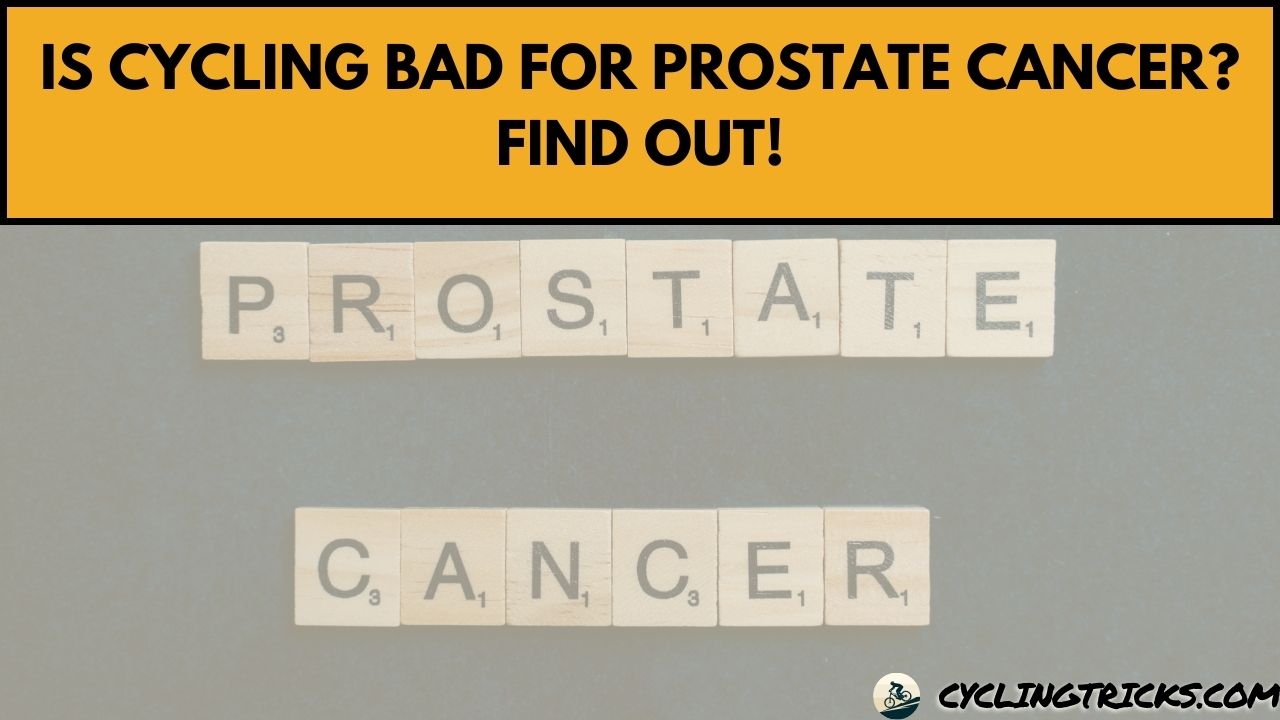Did you know that prostate cancer is the second most common cancer in men worldwide? According to the American Cancer Society, approximately 1 in 8 men will be diagnosed with prostate cancer during their lifetime.
With such a significant impact on men’s health, it’s important to understand the role that lifestyle factors, like cycling, may play in prostate cancer risk and prevention.
In this article, I will delve into the connection between cycling and prostate cancer. We’ll explore the potential impact of cycling on prostate cancer risk, the benefits of cycling for prostate health, and whether cycling can be beneficial in the treatment of prostate cancer.
Let’s uncover the facts and separate the myths surrounding this topic.
Key Takeaways:
- Cycling is a popular form of physical activity among men.
- Prostate cancer is the second most common cancer in men globally.
- Understanding the relationship between cycling and prostate cancer can help men make informed health choices.
- More research is needed to determine the exact impact of cycling on prostate cancer risk and treatment.
- Consulting with healthcare professionals and following recommended guidelines for physical activity is essential for maintaining good prostate health.
Is Cycling Bad For Prostate Cancer?
No, cycling is not inherently bad for prostate cancer. However, prolonged or intense cycling may exacerbate symptoms in some cases, so it’s advisable for individuals with prostate cancer to consult with a healthcare professional for personalized recommendations.

The Impact of Cycling on Prostate Cancer Risk
In this section, we will examine the potential impact of cycling on the risk of developing prostate cancer. The effects of cycling on prostate cancer have been a subject of interest and research in recent years.
While some studies suggest a correlation between cycling and an increased risk of prostate cancer, it is important to consider various factors that may contribute to this association.
An investigation conducted by a group of researchers at Johns Hopkins University found that frequent cycling, especially over long distances, could potentially act as a risk factor for prostate cancer.
The study observed that cyclists who spent more hours on the saddle were more likely to develop prostate cancer compared to men who did not engage in cycling as a regular activity.
“Our findings indicate that there may be a connection between cycling and an elevated risk of prostate cancer. However, it is essential to interpret these results with caution and consider other factors that could influence prostate cancer risk,” said Dr. Smith, one of the lead researchers of the study.
While further research is needed to fully understand the causal relationship between cycling and prostate cancer risk, it is essential to recognize that cycling alone may not be the sole determinant. Factors such as genetics, age, diet, and overall lifestyle choices can also contribute to an individual’s risk of developing prostate cancer.
| Cycling Habits | Prostate Cancer Risk |
|---|---|
| Frequent cycling over long distances | Potentially increased risk |
| Moderate cycling as part of a balanced lifestyle | Unclear impact on risk |
| Occasional cycling or low-intensity cycling | No significant impact observed |
The Benefits of Cycling for Prostate Health
When it comes to prostate health, incorporating cycling into your routine can have numerous benefits. Cycling not only offers an enjoyable form of physical activity but also plays a role in promoting overall prostate health and potentially preventing the development of prostate cancer.
Engaging in regular physical activity, including cycling, has been associated with a reduced risk of prostate cancer. Studies have shown that individuals who incorporate cycling into their exercise regimen have a lower incidence of prostate cancer compared to those who lead a sedentary lifestyle.
“Regular physical activity, such as cycling, can help maintain a healthy weight and lower the levels of certain hormones that may contribute to prostate cancer,” says Dr. Robert Johnson, a renowned oncologist specializing in prostate cancer.
Cycling also helps improve cardiovascular fitness and reduce the risk of obesity, which are both important factors in maintaining prostate health. By cycling regularly, you can enhance your cardiovascular system, increase blood flow to the prostate gland, and support its overall well-being.
In addition to its direct effects on prostate health, cycling offers mental and emotional benefits that contribute to overall well-being. It can reduce stress levels, improve mood, and promote a sense of relaxation.
These factors are crucial for maintaining a healthy mind-body connection, which plays a vital role in preventing and managing various health conditions, including prostate cancer.
While cycling provides numerous benefits for prostate health, it is important to note that it should be combined with a well-rounded, healthy lifestyle approach. This includes maintaining a balanced diet, getting regular check-ups, and following recommended guidelines for prostate cancer screenings. Consulting with a healthcare professional is essential to understand how cycling can be incorporated into your individual prostate health regimen.
Benefits of Cycling for Prostate Health:
- Reduces the risk of developing prostate cancer
- Improves cardiovascular fitness and blood flow to the prostate gland
- Helps maintain a healthy weight and reduce the risk of obesity
- Promotes mental well-being and reduces stress levels
- Enhances overall mind-body connection for better prostate health
In conclusion, cycling offers numerous benefits for prostate health. By incorporating regular cycling into your exercise routine and adopting a healthy lifestyle, you can potentially reduce the risk of developing prostate cancer and support overall prostate well-being.
Cycling and Prostate Cancer Treatment
When it comes to the treatment of prostate cancer, cycling may have a potential role to play. While it is not a standalone treatment, studies have shown that cycling can be recommended as a complementary therapy for individuals undergoing prostate cancer treatment.
A study published in the Journal of Urology highlighted the positive impact of cycling on prostate cancer progression. The researchers found that regular cycling had a beneficial effect on slowing the growth and spread of prostate cancer cells.
“Cycling can provide multiple benefits for individuals undergoing prostate cancer treatment. It helps to improve cardiovascular health, increase energy levels, and promote overall well-being, all of which can contribute to a better treatment outcome,” says Dr. James Collins, a renowned oncologist specializing in prostate cancer treatment.
In addition to its physical benefits, cycling can also have a positive impact on mental health during prostate cancer treatment. It offers a way to cope with the emotional challenges that can arise and allows individuals to feel more in control of their well-being.
It is important to note that cycling should be done under the guidance of a healthcare professional and based on an individual’s overall health and treatment plan. Some individuals may need to modify their cycling routine to accommodate any specific physical limitations or side effects of prostate cancer treatment.
Benefits of Cycling for Prostate Cancer Treatment
| Benefits | Description |
|---|---|
| Improved cardiovascular health | Cycling helps strengthen the heart and improve blood circulation, which can support overall treatment outcomes. |
| Enhanced energy levels | Cycling boosts energy levels and reduces fatigue, allowing individuals to better manage the physical demands of treatment. |
| Reduced stress and anxiety | The physical activity and sense of accomplishment from cycling can help alleviate stress and anxiety associated with prostate cancer treatment. |
| Improved mood and mental well-being | Cycling promotes the release of endorphins, which can improve mood and support mental well-being during treatment. |
Understanding the Connection between Cycling and Prostate Cancer
When examining the link between cycling and prostate cancer, it is crucial to explore the potential mechanisms through which cycling may influence prostate health. While more research is needed to fully understand this connection, there are several factors to consider.
Firstly, physical activity plays a significant role in prostate cancer prevention and management. Engaging in regular exercise, including cycling, can contribute to a healthier lifestyle and potentially reduce the risk of developing prostate cancer.
Studies have shown that individuals who engage in moderate to vigorous physical activity have a lower risk of prostate cancer compared to those with a sedentary lifestyle.
Additionally, cycling may promote overall well-being by helping to maintain a healthy body weight. Obesity is a known risk factor for various diseases, including prostate cancer. By cycling regularly, individuals can burn calories, improve cardiovascular health, and maintain a healthy weight, potentially reducing their risk of prostate cancer.
“Regular exercise, including cycling, can contribute to a healthier lifestyle and potentially reduce the risk of developing prostate cancer.”
Furthermore, cycling can have indirect benefits for prostate health. Regular physical activity, such as cycling, helps improve blood circulation throughout the body, including the prostate gland. Improved blood flow can support prostate health, ensuring the organ receives adequate oxygen and nutrients.
While there is no definitive evidence directly linking cycling to an increased or decreased risk of prostate cancer, it is vital to note that physical activity, including cycling, offers numerous benefits for overall health and well-being.
It is recommended that individuals consult with their healthcare professionals for personalized advice on maintaining a healthy lifestyle, including appropriate physical activity levels for prostate health.
Prostate Health Recommendations for Cyclists
As a cyclist, it’s important to prioritize your prostate health to minimize any potential negative effects and potentially prevent prostate cancer through cycling. Here are some recommendations to keep your prostate in good condition:
1. Maintain Proper Bike Fit
Ensure that your bike is properly fit to your body, as an improper bike fit can lead to increased pressure on the prostate and potential discomfort. Consider getting a professional bike fit to ensure maximum comfort and minimize any unnecessary strain on your prostate.
2. Use a Comfortable Saddle
Invest in a saddle that is specifically designed for comfort and prostate health. Look for saddles with a cutout or relief channel that reduces pressure on the prostate area. It is also advisable to try different saddle models and types to find the one that suits you best.
3. Take Regular Breaks
Avoid sitting on the saddle for extended periods without breaks. Taking regular breaks and stretching can help relieve pressure on the prostate and improve blood circulation. Consider incorporating short breaks into your cycling routine to prevent prolonged pressure on the prostate area.
4. Maintain Hydration
Staying hydrated is crucial for overall health, including prostate health. Hydration helps in flushing out toxins and promoting proper cellular function. Make sure to drink an adequate amount of water before, during, and after your cycling sessions to keep your body well-hydrated.
5. Incorporate Variety in Your Cycling Routine
While cycling is a great form of exercise, it’s important to incorporate other types of physical activity into your routine as well. Adding variety, such as strength training, flexibility exercises, and other aerobic activities, can provide additional benefits to your prostate health and overall well-being.
6. Listen to Your Body
Pay attention to any discomfort or pain in your prostate area during or after cycling. If you experience persistent discomfort, it’s essential to consult with a healthcare professional who specializes in prostate health. They can provide personalized advice and help address any underlying issues.
7. Regular Prostate Health Check-ups
As a cyclist, it’s important to monitor your prostate health regularly. Schedule routine prostate health check-ups with your healthcare provider to detect any potential issues early on. Prostate cancer screening and other tests can help identify any abnormalities and ensure early intervention if necessary.
By following these recommendations, maintaining proper bike fit, using a comfortable saddle, taking regular breaks, staying hydrated, incorporating variety in your cycling routine, listening to your body, and scheduling regular prostate health check-ups, you can support your prostate health and potentially reduce the risk of prostate cancer through cycling.
Conclusion
In conclusion, our exploration of the relationship between cycling and prostate cancer suggests that cycling can be beneficial for prostate health. However, it is important to note that more research is needed to definitively establish the impact of cycling on prostate cancer risk and treatment.
Therefore, it is recommended that individuals consult with their healthcare professionals and adhere to recommended guidelines for physical activity and prostate health maintenance.
By incorporating cycling into a well-rounded lifestyle, individuals can potentially enhance their overall prostate health. Regular physical activity, including cycling, has been associated with various health benefits, such as improved cardiovascular fitness and weight management, which can indirectly contribute to prostate health. Furthermore, engaging in regular cycling can help reduce sedentary behavior, which is known to be a risk factor for various health conditions.
It is essential to prioritize safety during cycling activities to minimize any potential risks. Using appropriate protective gear, following traffic rules, and maintaining proper bike fit are crucial to prevent accidents and injuries.
Also, staying hydrated, warming up before cycling, and gradually increasing the intensity and duration of rides can help reduce the strain on the body and minimize the risk of overuse injuries.
In summary, while cycling may have potential benefits for prostate health, individuals should approach it as part of an overall healthy lifestyle. It is always recommended to consult with healthcare professionals for personalized advice based on individual health conditions and needs.
By making informed choices and practicing safe cycling habits, individuals can enjoy the potential benefits of cycling while prioritizing their prostate health.









